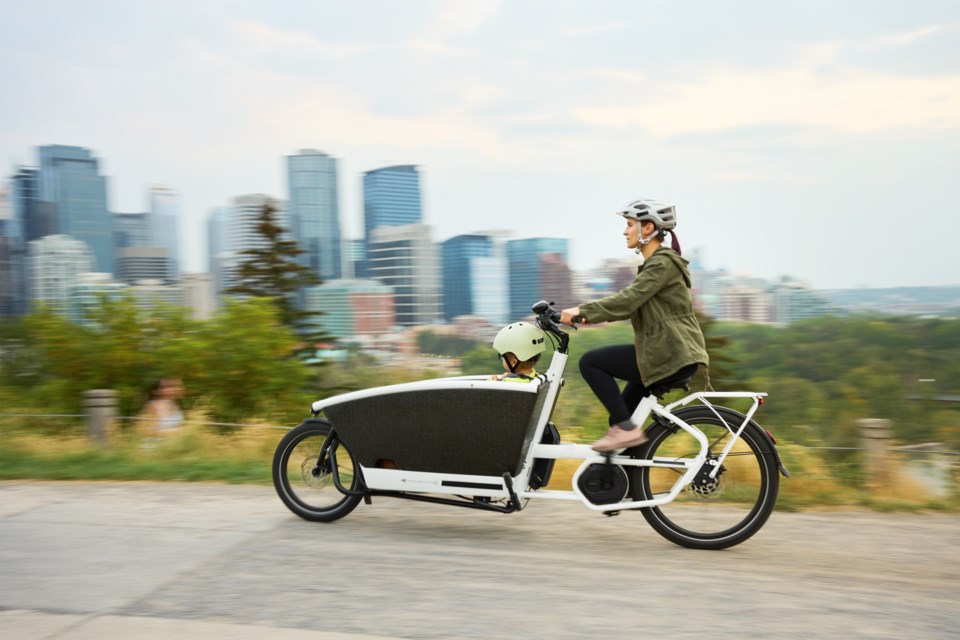On June 1, B.C.’s provincial government began taking applications for its new $6-million electric bicycle rebate program. In the preceding days, a well-timed press release had every type of media talking about the program, and good old-fashioned word of mouth spread the news like wildfire.
The program is mainly geared to help B.C. residents in the middle- to low-income range ($1,400 rebate for folks earning under $38,950; $1,000 for those in the next bracket up to $51,130; and $350 for those earning $51,131 and above) with the only qualifying conditions being the e-bike needed to cost $2,000 or more and be purchased from a retailer with a B.C. business license.
I’ve yet to join the e-bike craze, but have considered buying one for some time now (read my first experience of building and test-riding a friend’s RadExpand 5 e-bike in my June 11, 2022 column titled “Bitten by the e-bike bug”).
I figured this was as good a time as any to join the party and see if I could get a piece of the rebate pie. I logged on about an hour after the BC E-Bike Rebate Program website opened to find it crashing and not accepting any additional applications. I later learned there were more than 4,000 applications in the first hours, and somewhere between 8,000 and 9,000 at the end of the first day. Suffice to say, that $6 million dollars was gone faster than an e-bike gunning it down Lorimer hill. I was expecting the program to be popular, but not “Taylor Swift tickets” popular. So congratulations to the deserving Whistler locals who got their application in.
Rebate or not, commuter e-bikes are starting to become a household item Whistler. Parents shuttle their kids to school with cargo wagons; teenagers ride pillion on the back of their friends’ bikes; and fat-tired rigs are becoming the vehicle of choice for getting to the mountain on powder days.
It’s worth noting here that these more affordable e-bikes from brands like Rad Power and VoltBike have a throttle (in addition to pedal assist), putting them into the Class 2 category. That means they’re technically not supposed to be ridden on the Valley Trail, though many folks ignore that rule for the sake of convenience. There’s an argument to be made that a responsible rider on a Class 2 e-bike is safer on the Valley Trail than an irresponsible rider on a Class 1 (no throttle) e-bike, but in any case, e-bikes are quickly replacing the traditional “valley commuter” bikes, and it won’t be long before our beloved paved trail network starts having traffic issues of its own.
E-bike-related injuries are also on the rise—not just in Whistler, but globally. The speeds people can easily reach on bike paths is already contributing to more hospitalizations and a greater severity of trauma. Dr. Charles DiMaggio, director of injury research at NYU’s Langone Department of Surgery, analyzed data from 2000 to 2017, and told Fortune magazine that e-bikes “were three times more likely to result in hospitalization when compared to traditional pedal cycles, with many e-bike related hospital discharges coded as internal injuries.” Crashing a Class 2 e-bike is akin to coming off a small motorcycle, so reconsider riding one without a helmet, especially if you’re riding anywhere near the highway.
Using an e-bike to get home from the village after a heavy night of drinking should also be considered socially unacceptable. Accidents involving e-bikes and alcohol can cause life-altering injuries, and have already done so in Whistler.
So with seemingly more e-bikes on Whistler’s roads, paths and trails every day, what’s the long-term management plan? The Resort Municipality of Whistler developed a policy in 2022 for the types of e-bikes allowed on different trails, but left things pretty open-ended with the following in its final point of the policy:
“With e-mobility device technology changing rapidly and uptake increasing, new use patterns and issues will emerge. It will be important to monitor potential
social, environmental and economic impacts in the coming years.”
Making any sort of accommodation on Highway 99 for additional bike traffic will be up to the province, so I doubt we’ll see progress there any time soon. What we’ll eventually need is a sort of valley-spanning, e-bike freeway where there’s a recommended minimum speed, mandatory helmets, and sightlines and corners built specifically for higher-speed e-bikes. It sounds pie-in-the-sky, but I’m sure they said the same thing about the Valley Trail when that idea was first proposed. A logical starting point would be shaving a few metres off the edge of the Whistler Golf Club,
giving locals a high-speed bike path between Alta Vista and Whistler Cay with an exit right by the village.
E-bikes are only getting cheaper, faster and more popular. We’ll need to do more to manage them very soon.
Vince Shuley still very much likes to pedal without a motor. For questions, comments or suggestions for The Outsider, email [email protected] or Instagram @whis_vince.




